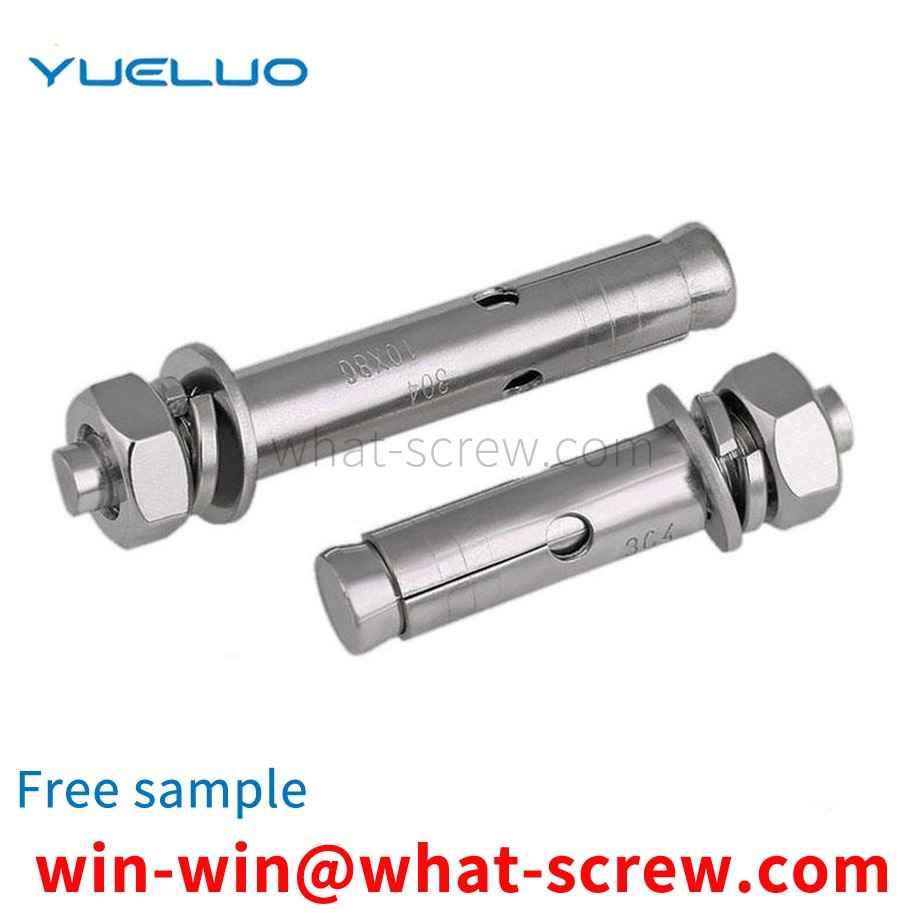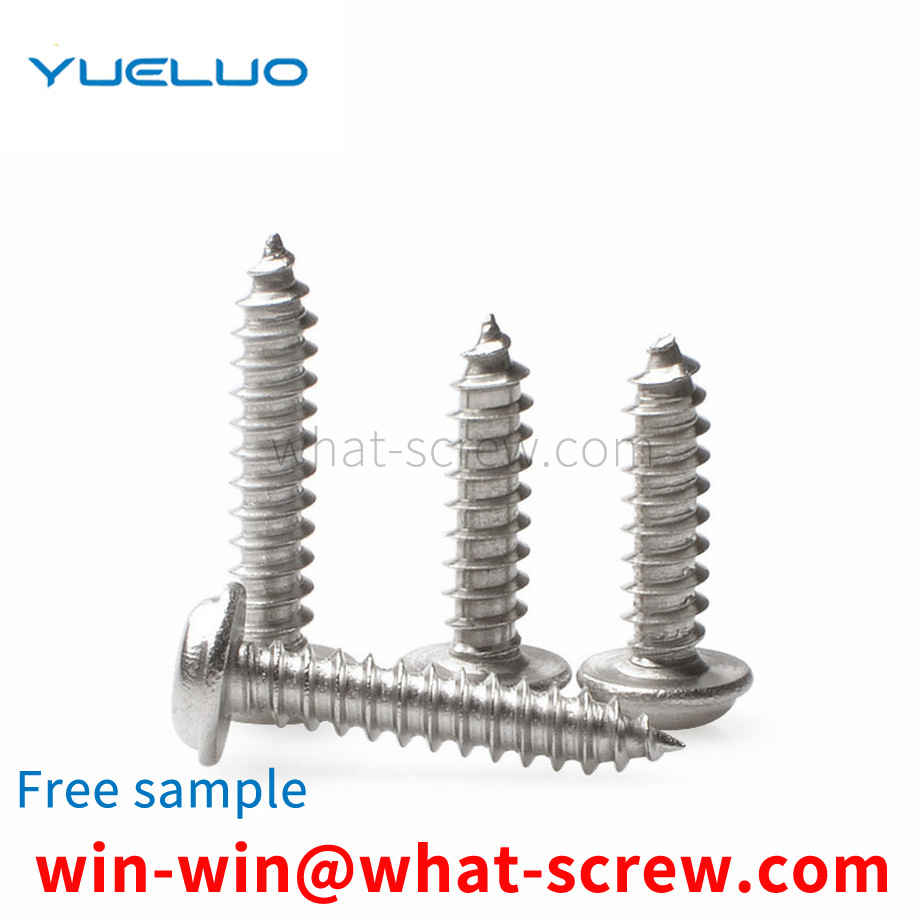1. Precautions for the quality of high-strength bolts or screws and flat washers assemblies. The surface of the Phillips hexagon combination screw should be checked for burrs or scratches. There is no oil stains, or rust. To test the material of the combination screw, the strength of the grade used in different high strengths should be consistent with it. Second, the combination bolt and nut should be used together with the same grade as the nut, and the same grade should be used together. Third, when installing and using combined bolts, it should be in reasonable weather conditions and should not be operated in the rain. Fourth, when installing, it is forbidden to use excessive force and excessive force. Lead to sliding teeth, or locking phenomenon.
High-strength hexagon head bolt combination screws for steel structures, mainly used in railway and highway bridges, boiler steel structures, industrial plants, high-rise civil buildings, tower and mast structures, hoisting machinery and their steel structures need to use friction-type high-strength bolt combinations for screws. It is characterized by an extra dodecagon at the end of the bolt, also known as the bolt. When installing, a special electric wrench must be used, which has two socket heads up and down, one is set on the hexagonal body of the nut, and the other is set on the decagon body of the outer hexagon screw. When tightening, apply a clockwise force to the nut, and apply an equal counterclockwise force to the dodecagon body of the bolt, so that the connecting neck between the end of the outer hexagon screw and the dodecagon body is subjected to torsion shearing until the neck is sheared. So far, the installation has come to an end. This torsion shear type high-strength outer hexagon screw is a one-time-use screw and generally cannot be removed after installation.
Standards are norms, and each country and sector has its own standards. The most commonly used standards in our daily business are as follows: GB—China National Standard (National Standard) ANSI—American National Standard (American Standard) DIN—German National Standard (German Standard) ASME—American Society of Mechanical Engineers Standard JIS - Japanese National Standard (Japanese Standard) BSW - British National Standard GB - National Standard is one of many standards in my country, as well as industry standards, professional standards and department standards. National standards are divided into: GB (mandatory standards) and GB/T (recommended standards) and GBn (national internal standards) and so on. We usually see GB30, GB5783, etc. are mandatory standards. In addition to some basic dimensions such as head-to-side, head thickness, etc., the above standards are mainly different in the threaded part. The threads of GB, DIN, JIS, etc. are all in MM (millimeters), which are collectively referred to as metric threads. Another thread like ANSI, ASME, etc. is called American standard thread in inches. In addition to metric threads and American threads, there is also a BSW-imperial standard, whose threads are also in inches, commonly known as Wyeth threads.
The safety of screws and bolts in important occasions is related to the safety of the overall operation of the equipment, especially in public places and open air places, the theft of screws will cause major safety hazards. It is easy to loosen, and there is a safety hazard in long-term use.
The quality of electroplating is measured primarily by its corrosion resistance, followed by appearance. Corrosion resistance is to imitate the working environment of the product, set it as the test condition, and perform a corrosion test on it. The quality of electroplating products shall be controlled from the following aspects: 1. Appearance: Partial uncoated, scorched, rough, gray, peeling, crusted, and obvious stripes are not allowed on the surface of the product, and pinholes, pitting, and black plating are not allowed. Slag, loose passivation film, cracks, peeling off and serious passivation marks. 2. Coating thickness: The operating life of fasteners in corrosive atmosphere is proportional to its coating thickness. The general recommended thickness of economical electroplating coating is 0.00015in ~ 0.0005in (4 ~ 12um). Hot-dip galvanizing: the standard average thickness is 54 um (43 um for diameter ≤ 3/8), and the minimum thickness is 43 um (37 um for diameter ≤ 3/8). 3. Coating distribution: With different deposition methods, the aggregation method of the coating on the surface of the fastener is also different. During electroplating, the coating metal is not uniformly deposited on the peripheral edge, and a thicker coating is obtained at the corners. In the threaded portion of the fastener, the thickest coating is located on the thread crest, gradually thinning along the flank of the thread, and the thinnest deposit is at the bottom of the thread, while hot dip galvanizing is just the opposite, the thicker coating is deposited on the inside corners and On the bottom of the thread, mechanical plating tends to deposit the same metal as hot-dip plating, but is smoother and has a much more uniform thickness over the entire surface [3]. 4. Hydrogen embrittlement: During the processing and processing of fasteners, especially in the pickling and alkali washing before plating and the subsequent electroplating process, the surface absorbs hydrogen atoms, and the deposited metal coating then traps hydrogen. When the fastener is tightened, the hydrogen is transferred towards the most stressed parts, causing the pressure to build up beyond the strength of the base metal and producing microscopic surface cracks. Hydrogen is particularly active and quickly seeps into the newly formed fissures. This pressure-rupture-penetration cycle continues until the fastener breaks. Usually occurs within a few hours after the first stress application. To eliminate the threat of hydrogen embrittlement, fasteners are heated and baked as soon as possible after plating to allow hydrogen to seep out of the plating, typically at 375-4000F (176-190C) for 3-24 hours. Since mechanical galvanizing is non-electrolyte, this virtually eliminates the threat of hydrogen embrittlement, which exists in galvanizing using electrochemical methods. In addition, due to engineering standards, it is forbidden to hot-dip galvanize fasteners with hardness higher than HRC35 (Imperial Gr8, metric 10.9 and above). Therefore, hydrogen embrittlement rarely occurs in hot-dip plated fasteners. 5. Adhesion: Cut or pry off with a solid tip and considerable pressure. If, in front of the blade tip, the coating peels off in flakes or skins, exposing the base metal, the adhesion shall be considered insufficient.
We have many years of experience in the production and sales of screws, nuts, flat washers, etc. The main products are: hardened gaskets, square aluminum profile accessories, hexagon socket flat cup round cup combination nuts, plug screws for reaming holes and other products, we can provide products such as You have the right fastener solution for you.



















 Service Hotline
Service Hotline




